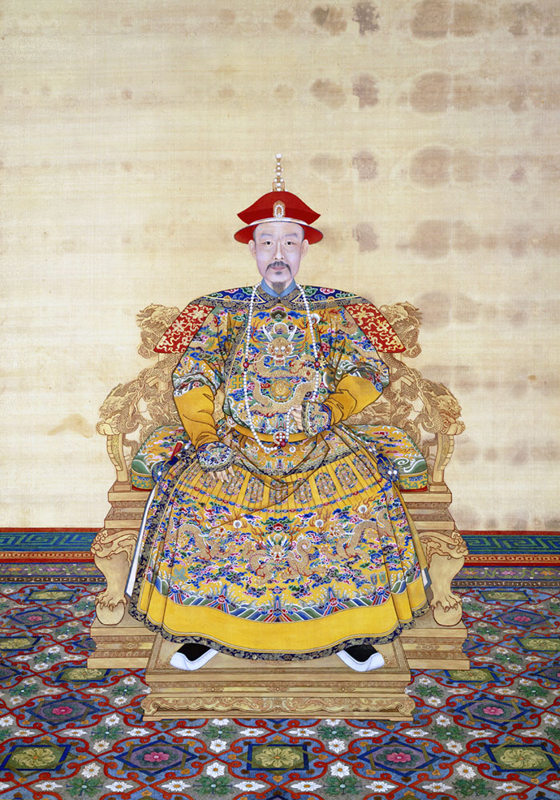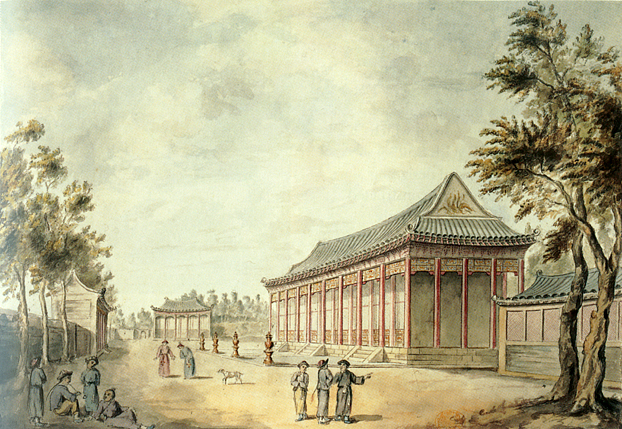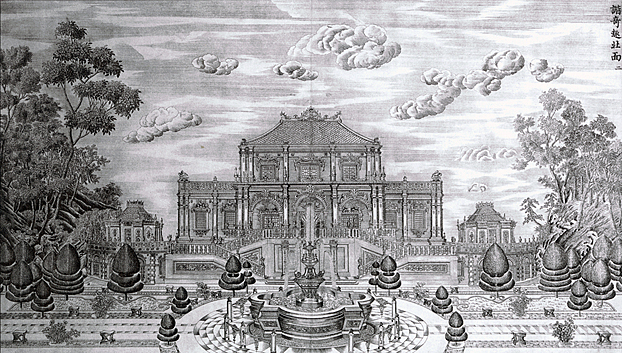Encyclopedia entry
As we ended the first block of Chinese history, we learned a lot of topics that introduced rich history through art. It’s apparent how, throughout its history, China had its ups and downs and needed to grow as a known world power. One topic we did glance over was an artistic culture in China and how there was some European influence after its discovery.
As we are learning, China has a great history, but it is looked over that Chinese leaders were able to document history through their paintings. If one assembles art and puts it chronologically, one can see the leadership changes and the empire’s growth.
The sources I looked at depict the Summer Palace’s heights in the empire. The gallery I looked at collected various amounts of Chinese paintings that help give a good background of the Chinese empire.

(r. 1662 to 1722)
This image is one of three great Qing emperors. This is the Kangxi emperor, who ruled from 1662 to 1722. This painting helps look into the past and who helped lead China during its high period. Kangxi was “a man of energy and vision, possessed a great intellectual curiosity, and embodied both the literary and the martial qualities valued in a Chinese emperor” (MIT Visualizing Cultures). He had the untiring motivation to help wipe out the Mongol’s threat to the north and the rebellions in the southwest. A unique act Kangxi did was take trips through the empire to connect further with the Han Chinese. He took this trip three times, but he celebrated his success by having “12 immense scroll paintings to commemorate his travels and each of the major cities and sites he visited” (MIT Visualizing Cultures). His use of scrolls to help appreciate his success helped “paint a picture of the past” and gave historians a look into the past.

Another unique part of Chinese artistic culture was the European influence on it. The introduction of Chinese and European culture is hard to understand in this day in age. To each other, the Chinese and Europeans could’ve been aliens, and they lived different lives. We can understand their impact on exploring Chinese culture and architecture through the perspective of Jesuit missionaries or European artists. “During the reign of the Qianlong Emperor, Chinese and European court artists collaborated to create new paths in the fields of science and the arts; they combined techniques imported from Europe with Chinese techniques and created illusionistic paintings and architectural designs of unusual beauty for the recreation of Qianlong” (Giuseppe Castiglione (Lang Shining), Precursor of the First Pictorial-Architectural Globalization | Asian and African Studies). This collaboration built a relationship between Giuseppe and the Qianlong emperor that gave us a new style of architecture. His techniques between European and Chinese architecture gave a unique look with him combining Chinese wood, like the columns, then adding in made such as sculptures. Another Jesuit painter that grew fascinated by the culture in China was Jean Denis Attiret, who immersed himself in his art. He “appreciated the architecture and gardens, praising their “beautiful Disorder,” and confessed that “Since my Residence in China, my Eyes and Taste are grown a little Chinese” (MIT Visualizing Cultures). He wrote a letter that explained his fascination with the culture, and it was compared to Maro Polo’s recount of the Mongol/Chinese people.
One way that Chinese influence carried over to Europe was in the gardens. The Chinese style of gardening became an influential part of gardening in Europe. Well-known parks adopted some characteristics of Chinese gardens. One park that did the was the Kew Gardens. As gardens started to change, other parts of Chinese architecture, such as pagodas and pavilions, also leached over.

The Europeans weren’t the only ones who took parts of another culture. The Chinese emperor enlisted Jesuit assistants to build European-inspired palaces in China. The Yuanmingyuan was on a strip of land that was part of the emperor’s land. He requested 20 acres to replicate European culture. Giuseppe Castiglione was in charge of this renovation because of his work on royal paintings. “He drew several pictures of Italian villas and French palaces and fountains, consulting books that the Jesuits had in their library” (MIT Visualizing Cultures). which helped frame what the emperor would see. Bringing a piece of Europe to China modernized China giving it more than just Asian culture.
Collecting these Western ideas influenced emperors with what they did and changed them in some ways. Even though paintings and buildings were affected by the West, they had minimal impact on regular Chinese people. Nobody stayed in the European palaces, but “the courts also housed numerous objects manufactured in China under imperial order “(MIT Visualizing Cultures). This was when the wants of imperial Europe influenced the shift of the Chinese economy.
Overall, Chinese artwork is a big piece of history. Due to artists wanting to express their artistic abilities, we can look at history through their eyes. Because of their courage to break barriers, they “achieved an extraordinary collaboration between Asia and Europe, fantastically symbolized in the European-style palaces of the Yuanming Yuan.” (Giuseppe Castiglione (Lang Shining), Precursor of the First Pictorial-Architectural Globalization | Asian and African Studies). This historical view gives some insight into China.
Li, Lillian M. “The Garden of Perfect Brightness.” Visualizing Cultures. https://visualizingcultures.mit.edu/garden_perfect_brightness/ymy1_essay04.html.
Castile, Manuel V. “Giuseppe Castiglione (Lang Shining), Forerunner of the First Pictorial-architectural Globalization.” March 26, 2015. https://estudiosdeasiayafrica.colmex.mx/index.php/eaa/article/view/2245/2309#info.
Leave a Reply